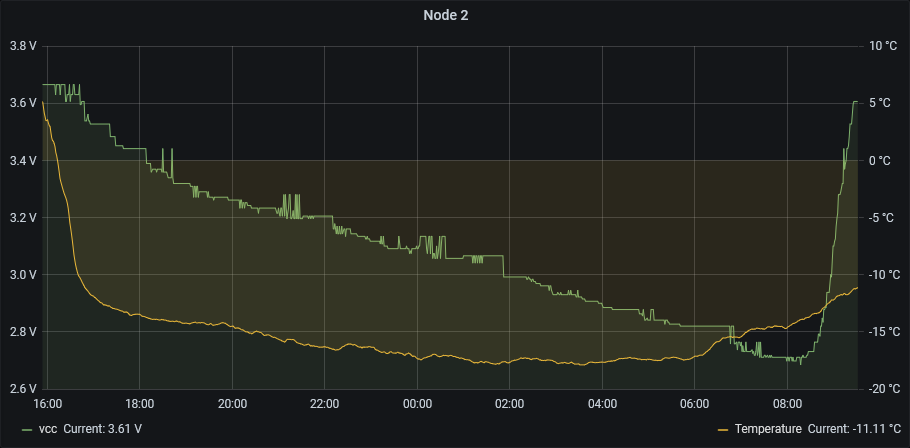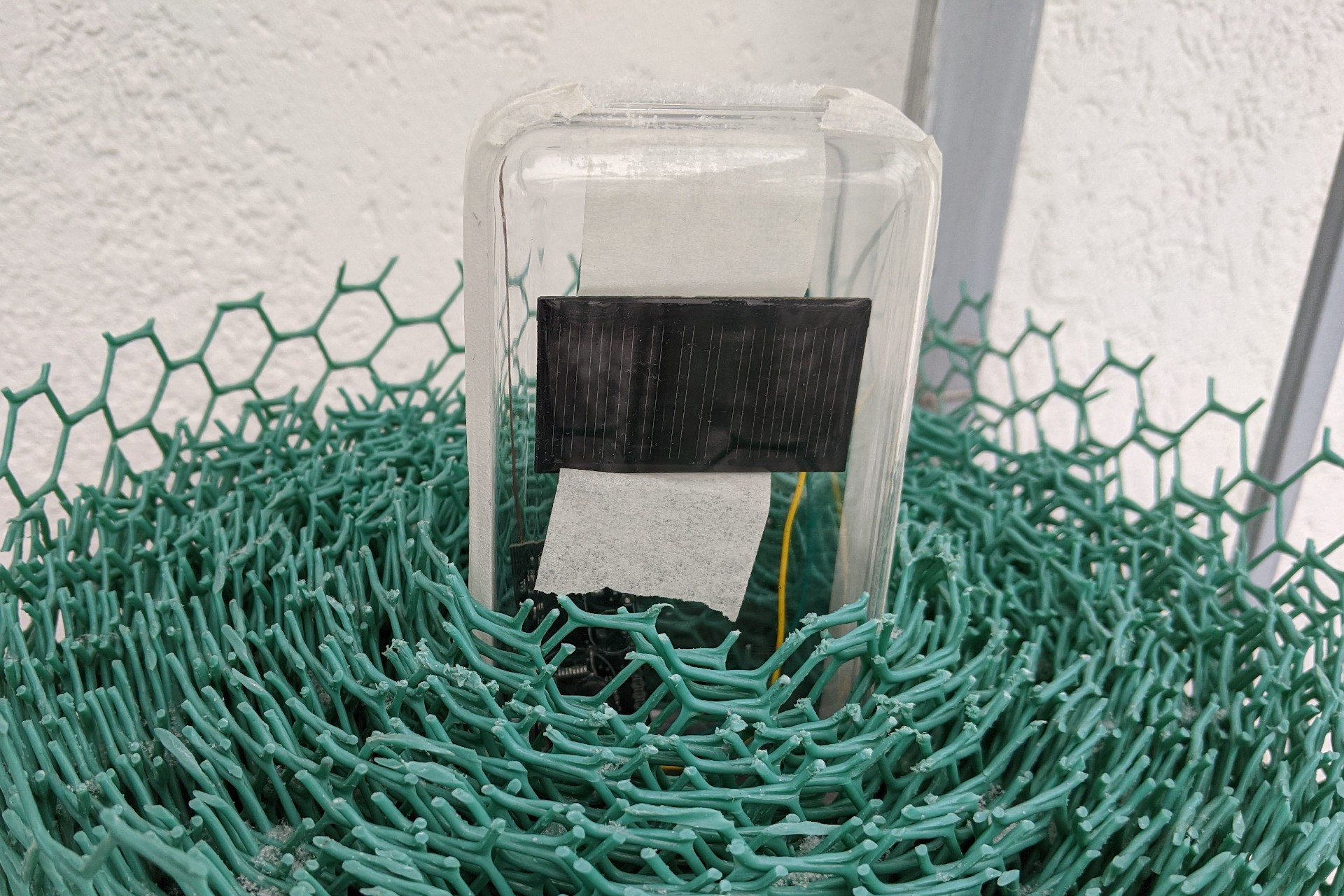I've tested the module outdoor for about two weeks and it works great. Yesterday was the coldest night (-17.8 °C), and it passed without any issues.

Additionally, I'll double-check datasheets for each component to validate the temperature range, but most of them should support -40 °C to 85 °C.
As I mentioned earlier, in the final version, a 3d printed case should be used, but it isn't ready yet. So for testing purposes, a transparent candy box was repurposed.

The lowest detected voltage with the current setup was 2.23V, it's okay, but I'll replace the 1F supercapacitor with 1.5F in the future.
During the testing, I accidentally powered off the gateway and turned it on after a couple of hours. The node was discharged much more than I'd expected, but the reason was clear - retries. I use sendWithRetry that by default has 2 additional attempts to send the data. So 3 transmissions instead of 1 per minute during a couple of hours depleted the capacitor much faster. I'll either disable retries or implement smart ones (e.g. if the last 3 transmissions were retried without success - disable retry till the next success transmission).
Currently, I'm waiting for a crimping tool for JST 1.25 connectors, I may use them for connecting the solar panel and the sensor instead of just solder wires. Also, I've found that designing a small and waterproof case isn't something easy. Probably, a much easier way is to fill the whole box with silicone :)
I was asked a few times whether I going to sell this module to makers and hobbyists, and I don't really know. Would you buy it?) The module itself has little sense without a gateway, so probably, I have to finish it first (I already have a vision, almost all components, and a rough 3d model).
 strange.rand
strange.rand
Discussions
Become a Hackaday.io Member
Create an account to leave a comment. Already have an account? Log In.
https://youtu.be/Orf9segRLv0
6:00 to 8:00 min
the project describes a capacitor and components that limit the upper and lower voltage, preventing current leakage, losing the potential of upper collection.
- maybe it's worth handling the higher voltage/energy storage of the capacitor, as described in the reference video versus leaking. Have you evaluated the energy benefit/costs?
- another matter; Perhaps a 100m bluetooth range alternative?
could it be useful for a cell phone as a bridge/hub for an internet uplink?
Cell phones are aleeady sunked costs, with users next to the sensors.
Are you sure? yes | no